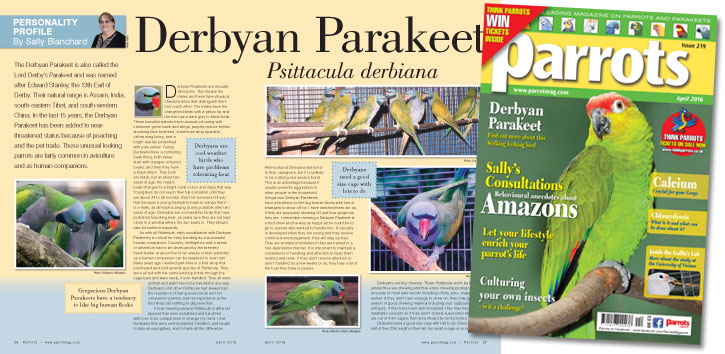
Personality Profile by Sally Blanchard
The Derbyan Parakeet is also called the Lord Derby's Parakeet and was named after Edward Stanley, the 13th Earl of Derby. Their natural range is Assam, India, south-eastern Tibet, and south-western China. In the last 15 years, the Derbyan Parakeet has been added to near-threatened status because of poaching and the pet trade. These unusual looking parrots are fairly common in aviculture and as human companions.
Derbyan Parakeets are sexually dimorphic. This means the males and hens have physical characteristics that distinguish them from each other. The males have the orange/red beak with a yellow tip and the hen has a dark grey to black beak. These beautiful parrots have unusual colouring with iridescent green back and wings, purpley-mauve bellies, shocking blue forehead, chartreuse wing epaulets, yellow wing lining, and a bright teal tail underlined with pale yellow. Young Derbyans have a confusing beak thing, both sexes start with orangey coloured beaks, and then they have a black stripe. They both are black, but at about two years of age, the male’s beak changes to a bright coral colour and stays that way. Youngsters do not reach their full coloration until they are about 24 to 36 months. Don’t let someone tell you that because a young Derbyan’s beak is orange that it is a male, as dimorphic sexing is only possible after two years of age. Derbyans are cool weather birds that have problems tolerating heat, so make sure they are not kept close to a window where the sun beats in. They should also be bathed frequently.
Buy Now!








Parrot Chat
Buyers Guides
Breeding articles